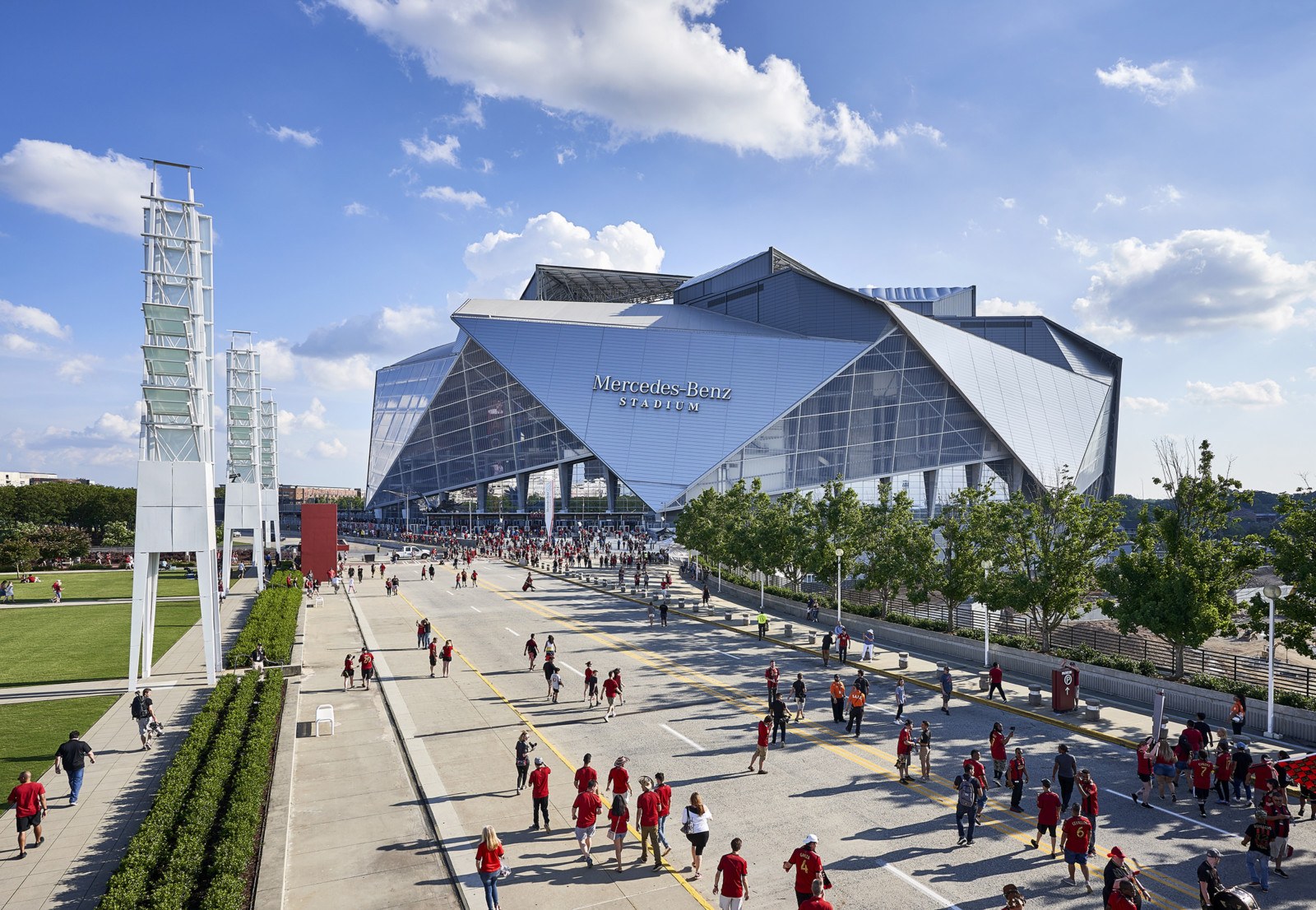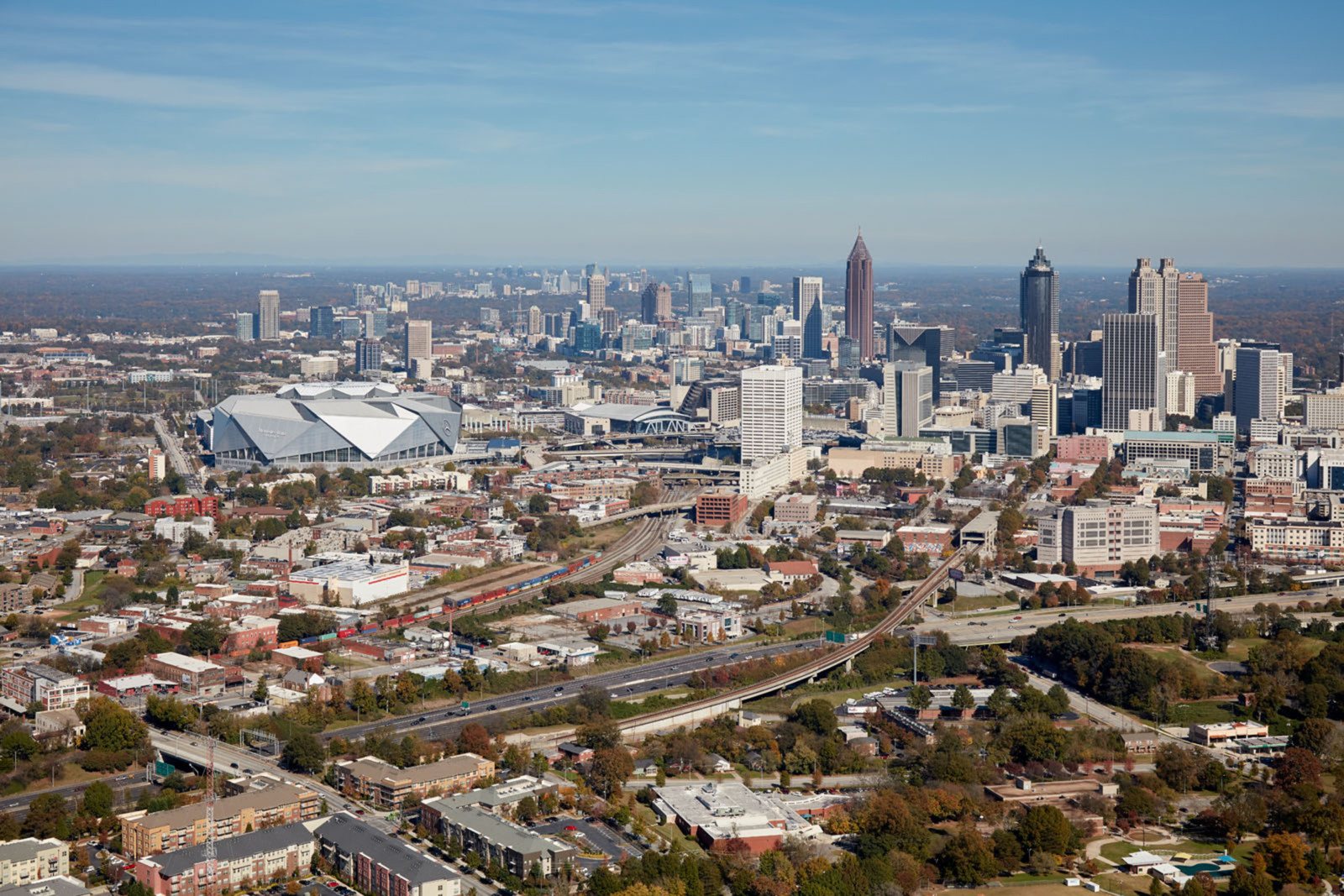Chris DeVolder, managing principal of HOK’s Kansas City practice and sustainable design leader for Sports + Recreation + Entertainment, spoke about the impact sports venues can have on the broader green building movement.
The article examines how new facilities like the LEED Platinum Mercedes-Benz Stadium can serve as showcases for sustainable design and shine a light on climate change—while also saving owners money on operations.
Excerpted from The New York Times:
Sports arenas and stadiums have a far smaller carbon footprint than many factories, shopping malls and office buildings. While they host thousands of people on game days and for big events like concerts, in general they are used intermittently and for short bursts.
But in recent years, they have become showcases for green design, even as critics say leagues are wrapping themselves in eco-friendly banners to help market their sports.
Their physical and cultural prominence also means that green stadiums are shining a light on the complex and critical issue of climate change. Fans disinclined to care about the issue are exposed to things like highly efficient LED lighting or low-flush toilets, and can see that going green is not a hardship, but a choice.
“Any single sporting event doesn’t really have a giant ecological footprint, whether it’s a football game or even a season for a team,” said Allen Hershkowitz, the founder of Sport and Sustainability International, which promotes low-carbon strategies for sports teams, leagues and associations. “But the cultural and social platform of sports is almost unparalleled in terms of its ability to reach people.”
The key to reducing the impact on the environment is integrating these measures into the design of the building from the outset. In Atlanta, Mr. Blank, who contributed roughly $1.1 billion toward the $1.6 billion price tag, said from the start that he wanted his building to be LEED Platinum. So groups of architects, contractors, stadium operators and team executives started brainstorming at the beginning.
“We were trying to send a message to the construction industry to be efficient but also build great buildings,” said Mr. Blank, who made his fortune as the co-founder of Home Depot. “I told them it was important to me and for the environment and the community. They knew from Day 1 that it was a priority.”
With clear marching orders, Chris DeVolder, an architect at HOK who worked on the project and other LEED-certified buildings in Seattle and Edmonton, Alberta, integrated many features into the construction from the start. This allowed the designers and contractors to consider items they might not have otherwise, like adding a second underground cistern in a space that might have been filled in with landfill or crushed rock.
“It is unusual to have that mandate,” he said. “Usually, you’re well into the design process, or even construction process, and you get a question, ‘What’s this LEED thing.’”

